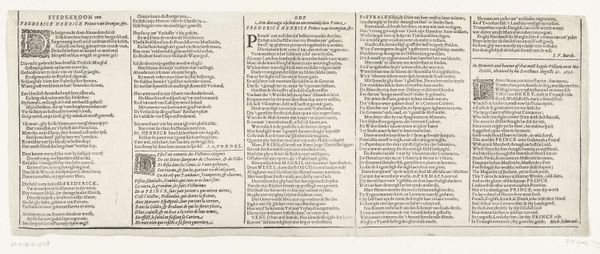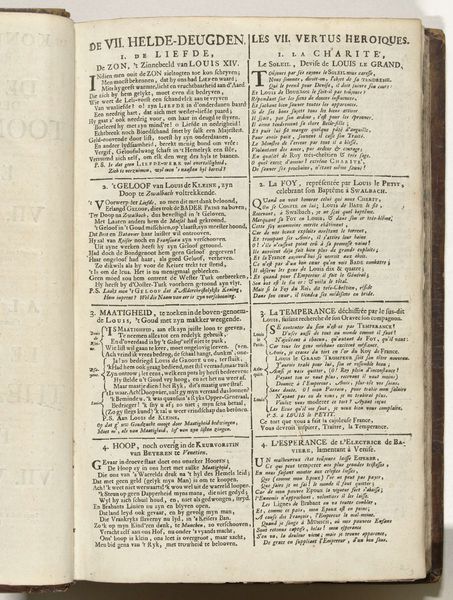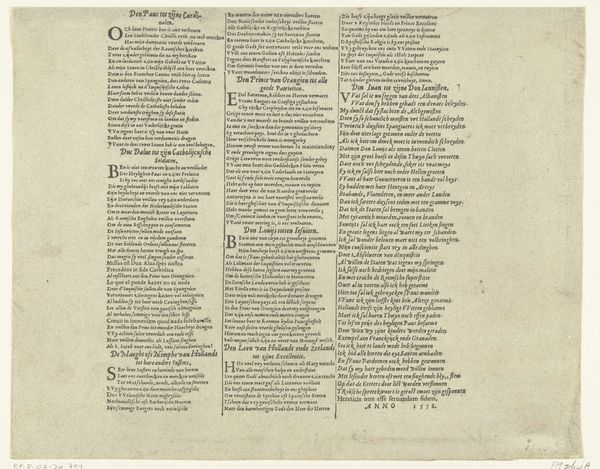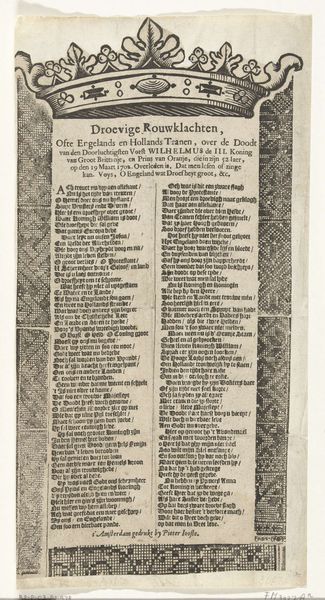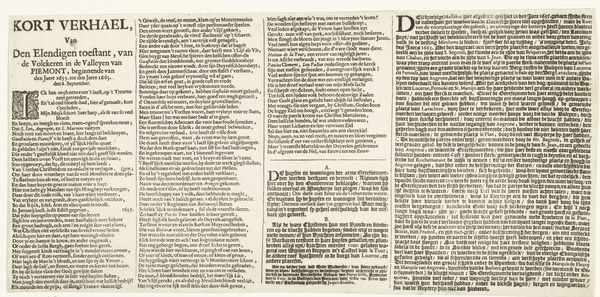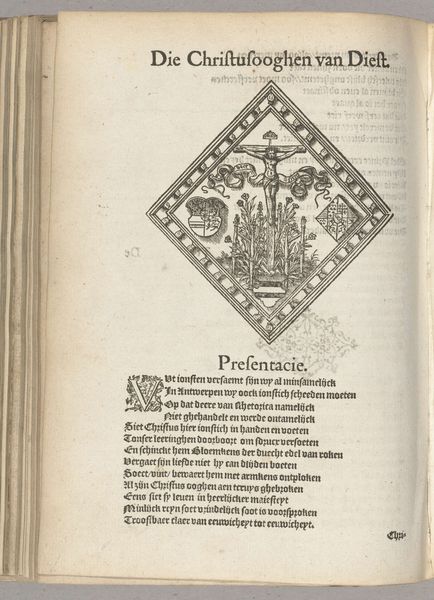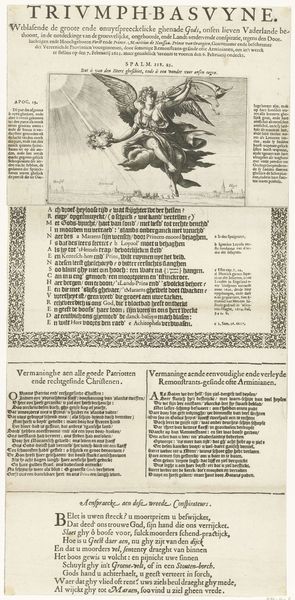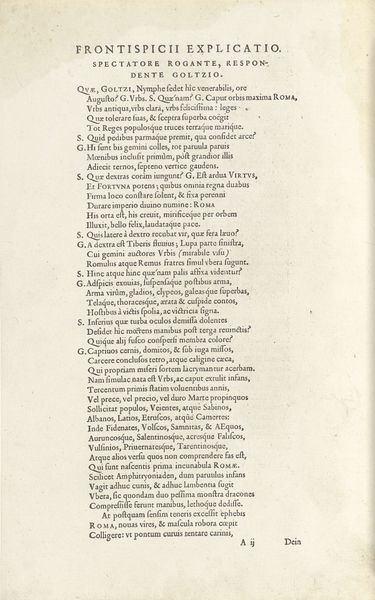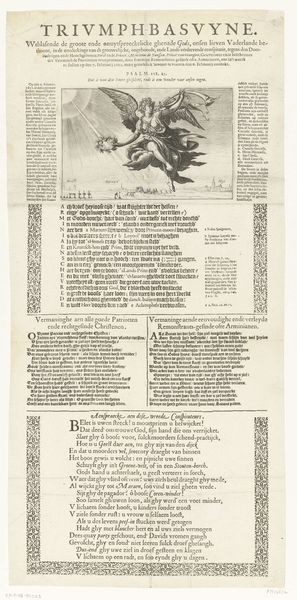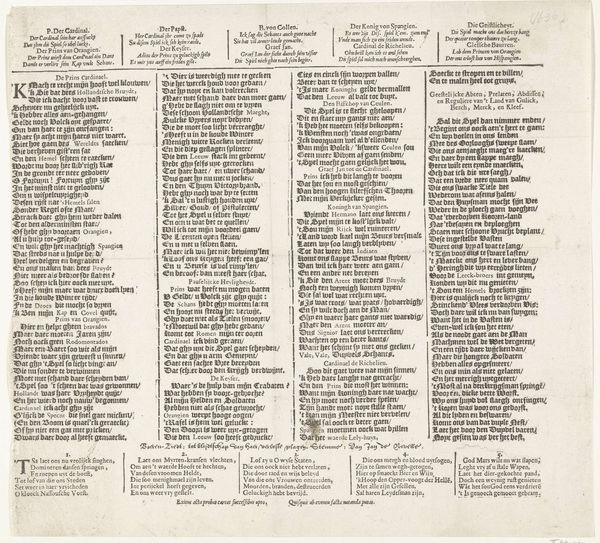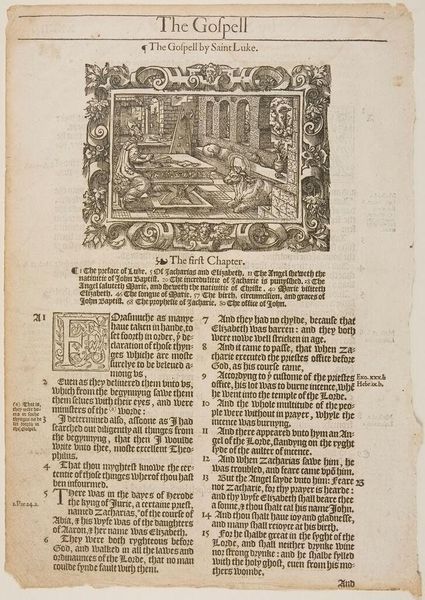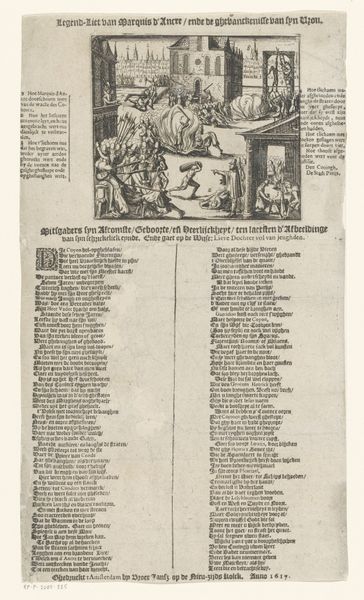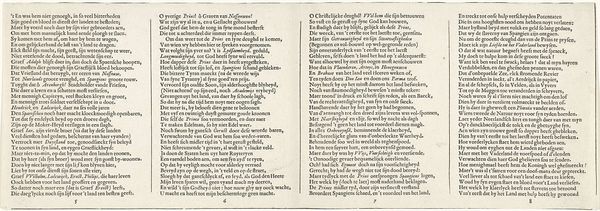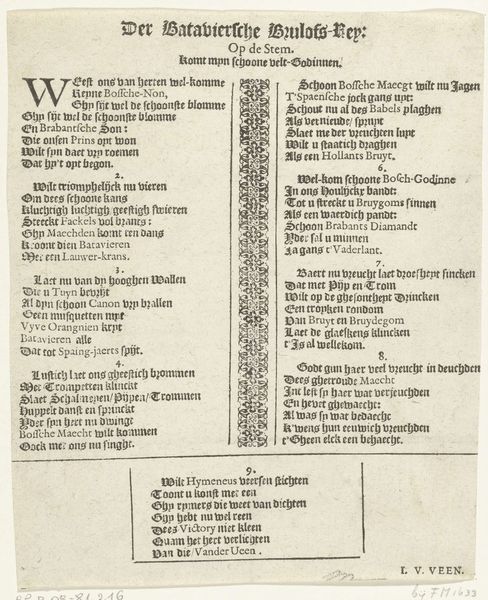
Vertroosting aan de Hollandse Maagd bij het overlijden van prins Maurits, 1625 1625
0:00
0:00
print, engraving
#
dutch-golden-age
# print
#
figuration
#
history-painting
#
engraving
Dimensions: height 130 mm, width 118 mm, height 432 mm, width 292 mm
Copyright: Rijks Museum: Open Domain
Curator: Let’s begin with this intriguing 1625 engraving, "Vertroosting aan de Hollandse Maagd bij het overlijden van prins Maurits," commemorating the death of Prince Maurice. The artist, unfortunately, remains anonymous. Editor: It has an immediate melancholic impact—the central figure, the Dutch Maiden, looks utterly dejected. There's an imposing quality to the print, even at this small scale. Curator: The print serves as political propaganda of its time, reflecting on a pivotal moment. We see the Dutch Maiden seated within a basket, clutching a shield emblazoned with the Lion of the Netherlands, a powerful symbol. Her upward gaze suggests heavenly comfort amidst earthly turmoil. I think it is important to consider what the materials imply within the social fabric, particularly during a period of political transformation. Editor: The materiality here intrigues me—it’s an engraving, a readily reproducible medium. Think of how that availability affects the spread of the message! It places it directly within the sphere of accessible communication, connecting it to practices of civic engagement at the time. How the print functioned—passed around, displayed, maybe even pasted up—contributes heavily to its meaning. Curator: Exactly. The inclusion of copious text beneath the allegorical scene furthers this message, offering verses of consolation. The work, after all, isn't only a somber announcement, but a tool encouraging national resolve during a difficult time, urging its audience to support the new Prince of Orange, Frederick Henry. I look at the allegory as something more complicated though, speaking also to the constructed femininity associated with the nation itself, an object of comfort, resilience, and national pride. Editor: I can definitely see how gender plays a key role within your interpretative landscape. From my perspective, the linear detail enabled by engraving suggests an association to value—a relationship to skill, access to expertise, even some status of value attached to it that wouldn’t exist for an ink wash or woodblock print, for example. These kinds of clues can open discussions on production processes, networks of artists and artisans. Curator: And beyond simply identifying this period's anxieties and grief, we must remember that artworks such as these actively work to shape perception, directing national consciousness towards the future, toward renewed strength. It reflects a potent cultural interplay between the symbolic and material. Editor: True, a simple object yet an effective conveyor for complex and shifting emotions and socio-political undercurrents!
Comments
No comments
Be the first to comment and join the conversation on the ultimate creative platform.
